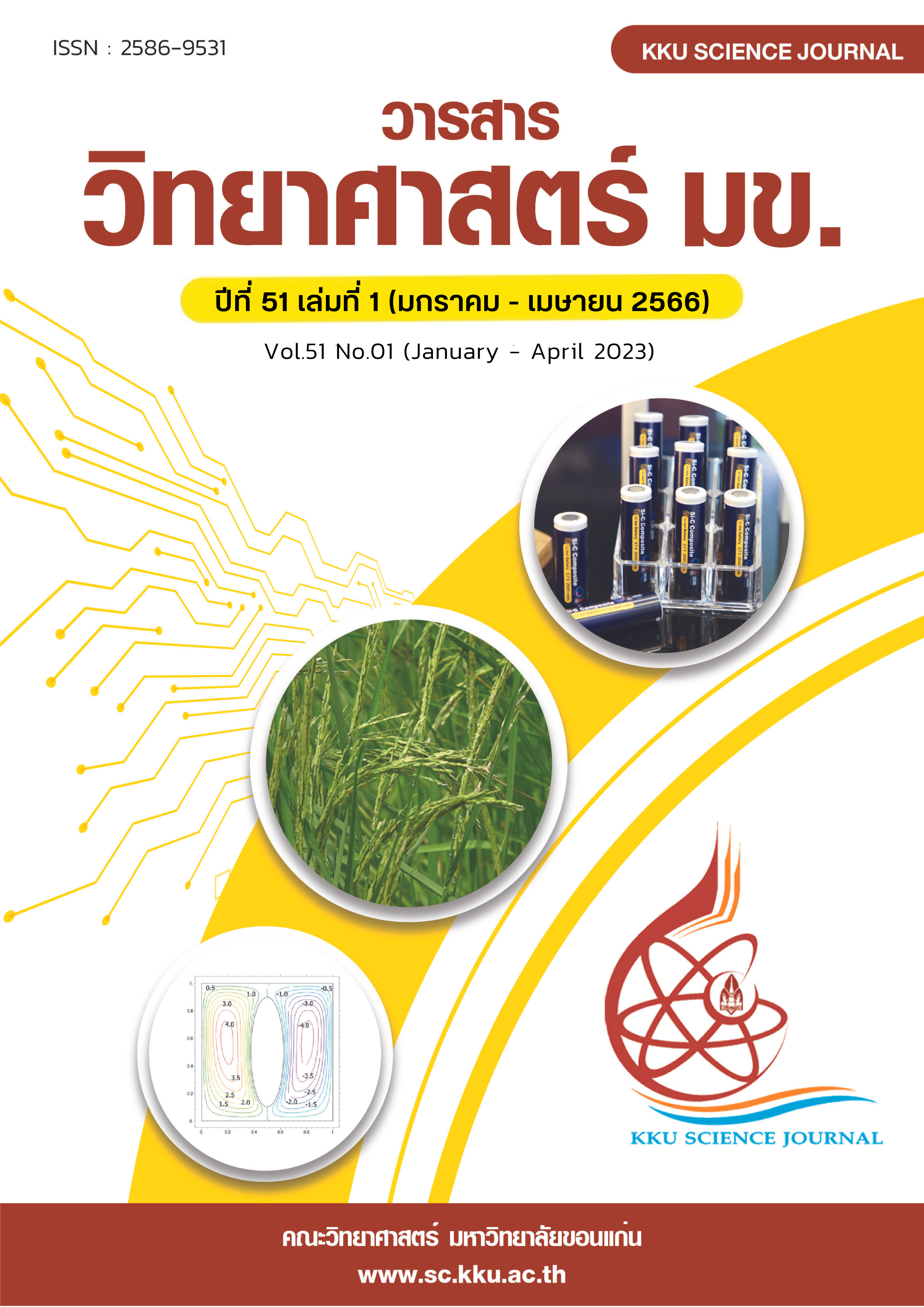Estimation of Beach Profile Changes after Monsoon in the Mai Khao Beach
Main Article Content
Abstract
This research was conducted to preliminarily survey the surface condition and changes in beach profiles of the Mai Khao beach, Phuket Province, before and after the monsoon season of the year 2021. The information obtained was considered for choosing an area that was suitable for tracking coastal erosion problems leading to the change in Mai Khao beach area. Ten measurement stations were set up and monitored by the local people and the local government. The data collection of x y z coordinates was done using TOPCON Electronic Total Station camera. The collected data were then used to create 3D model of beach profile of each area. Moreover, the slope value of the beach was calculated to study the beach profile change. The results showed that the surface condition of some areas were changed due to the erosion of the waterway that flowed into the sea. In addition, the average slope value of the beach decreased from the first area to the final area and the decrease in slope value of the beach occurred in a period of monsoon season. However, there have five areas that should be monitored and tracked beach surface due to erosion in the area.
Article Details

This work is licensed under a Creative Commons Attribution-NonCommercial-NoDerivatives 4.0 International License.
References
Apostolopoulos, D. and Nikolakopoulos, K. (2021). A review and meta-analysis of remote sensing data, GIS methods, materials and indices used for monitoring the coastline evolution over the last twenty years. European Journal of Remote Sensing 54(1): 240–265.
Baig, M.R.I., Ahmada, I.A., Shahfahad, Tayyaba, M. and Rahman, A. (2020). Analysis of shoreline changes in Vishakhapatnam coastal tract of Andhra Pradesh, India: an application of digital shoreline analysis system (DSAS). Annals of GIS 26(4): 361–376.
Briganti, R., Torres-Freyermuth, A., Baldock, T.E., Brocchini, M., Dodd, N., Hsu, T.J., Jiang, Z., Kim, Y., Pintado-Patiño, J.C. and Postacchini, M. (2016). Advances in numerical modelling of swash zone dynamics. Coastal Engineering 115: 26-41.
Callaghan, D.P., Ranasinghe, R. and Roelvink, D. (2013). Probabilistic estimation of storm erosion using analytical, semi-empirical, and process based storm erosion models. Coastal Engineering 82: 64-75.
Cheablam, O. (2015). Coastal change and tourism resources: problems and consequences. Journal of Environmental Management 11(2): 134-145.
Chanjaron, T., Srimala, V. and Sawangthum, N. (2017). Coastal Change Detection Monitoring Technics: A Case Study of Klong Hok Village, Ko Proet Subdistrict, Laem Sing District, Chanthaburi Province. Rajabhat Rambhai Barni Research Journal 11(3): 170-183.
Cheng, J., Wang, P. and Guo, Q. (2016). Measuring Beach Profiles along a Low-Wave Energy Microtidal Coast, West-Central Florida, USA. Geosciences 6(44): 1-12.
Inkerd, S., Onsri, N., Kwanthong, N., Klompong, N. and Khankajorn, T. (2018). Remote Sensing Applications for Change Detection in The Andaman Sea Coastal Region, Sikao District, Trang Province. Wichcha Journal 37(Special Issues): 84-98.
Kizil, U. and Tisor, L. (2011). Evaluation of RTK - GPS and Total Station for applications in land surveying. Journal of Earth System Science 120(2): 215–221.
Leatherman, S.P., Zhang, K. and Douglas, B.C. (2000). Sea Level Rise Shown to Drive Coastal Erosion. Eos Transactions American Geophysical Union 81(6): 55-57.
Limsakul, W., Suteerasak, T., Koedsin, W., Tanchana, S. and Chongsrirattanakun, W. (2021). The quantity of metal elements in Sand of Mai Khao Beach Phuket Province. Burapha Science Journal 26(3): 1456-1475.
Mou, F.I., Bhuiyan, N.T., Alvee, F.M., Rahman, A. and Maliha, M. (2020). Estimation of Erosion-Accretion Using Remote Sensing Approach: A Case Analysis on Teknaf Coastline. In: Proceedings of the 5th International Conference on Advances in Civil Engineering (ICACE 2020). CUET, Chattogram, Bangladesh.
Prasad, D.H. and Kumar, N.D. (2014). Coastal Erosion Studies—A Review. International Journal of Geosciences 5(3): 341-345.
Poolsawat, S., Triampo, W., Amornsamankul, S., Pimpunchat, B. (2020). Spatial and Temporal Shoreline Changes of the Bang Pakong Subdistrict (Thailand) in 2009–2018. International Journal of Simulation Systems, Science & Technology 21(4): 6.1-6.9.
Sarajit, O. and Nakhapakorn, K. (2013). Geo-information Application for Coastal Erosion Situation, Phetchaburi Province. Thammasart Science and Technology Journal 22(6): 789-800.
Smith, D., Wall, W., Branes, R. Simons, B. and Chen, Z. (2010). Surfer Version 9.9.785 Surface Mapping Systeme (Computer program). Golden Software, Inc.
Stockdon H.F., Thompson, D.M., Plant, N.G. and Long, J.W. (2014). Evaluation of wave runup predictions from numerical and parametric models. Coastal Engineering 92: 1-11.
Thampanya, U., Vermaat b, J.E., Sinsakul, S. and Panapitukkul, N. (2006). Coastal erosion and mangrove progradation of Southern Thailand. Estuarine, Coastal and Shelf Science 68: 75-85.
Toimil, A., Camus, P., Losada, I.J., Le Cozannet, G., Nicholls, R.J., Idier, D. and Maspataud, A. (2020). Climate change-driven coastal erosion modelling in temperate sandy beaches: Methods and uncertainty treatment. Earth-Science Reviews 202: 103110.
Truttung, W. (2020). Study of Shoreline Change Using Geographic Information System. Journal of Science and Technology 3(1): 55-65.
Zhang, K., Douglas, B.C. and Leatherman, S.P. (2004). Global Warming and Coastal Erosion. Climatic Change 64: 41–58.


